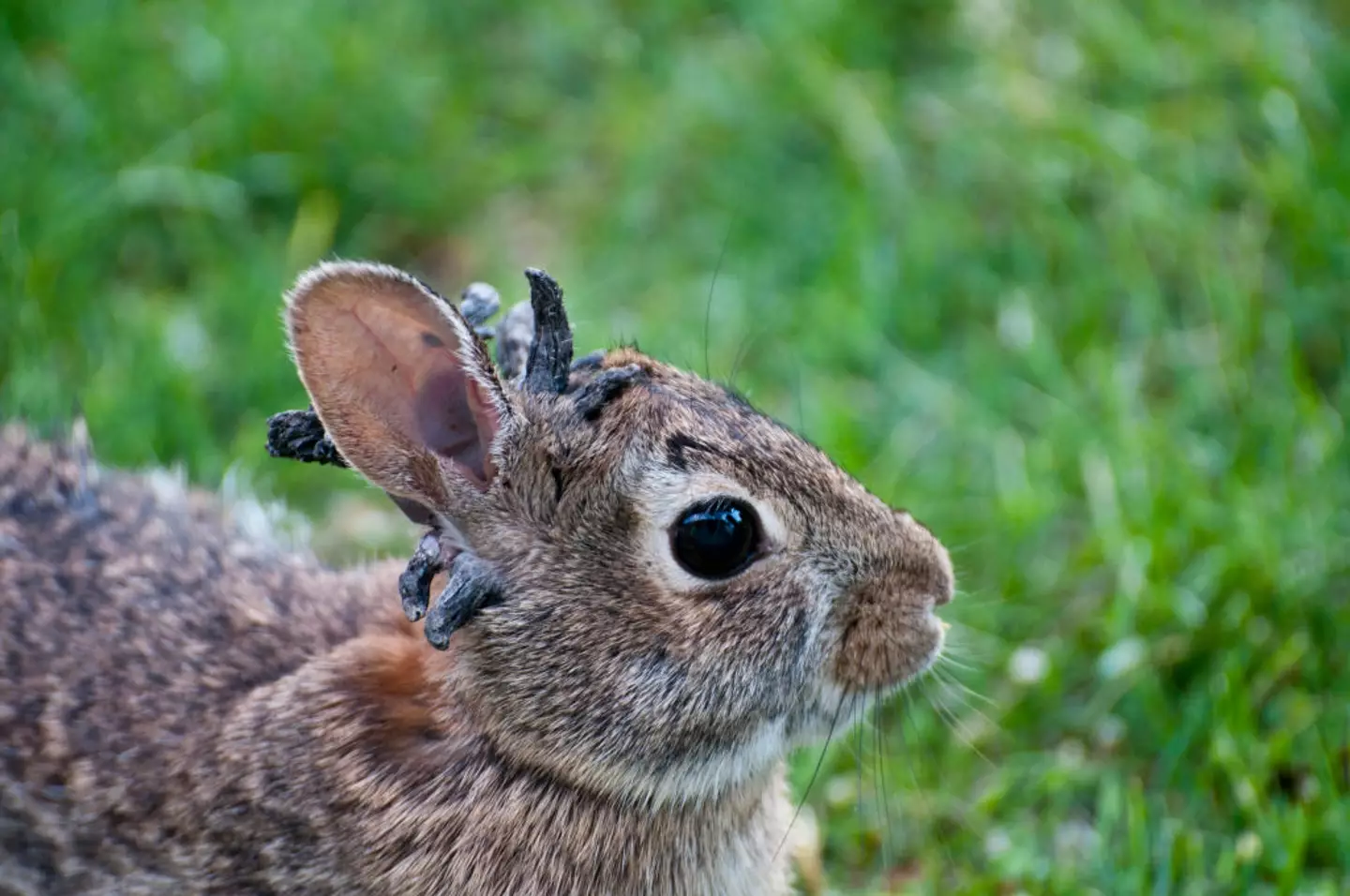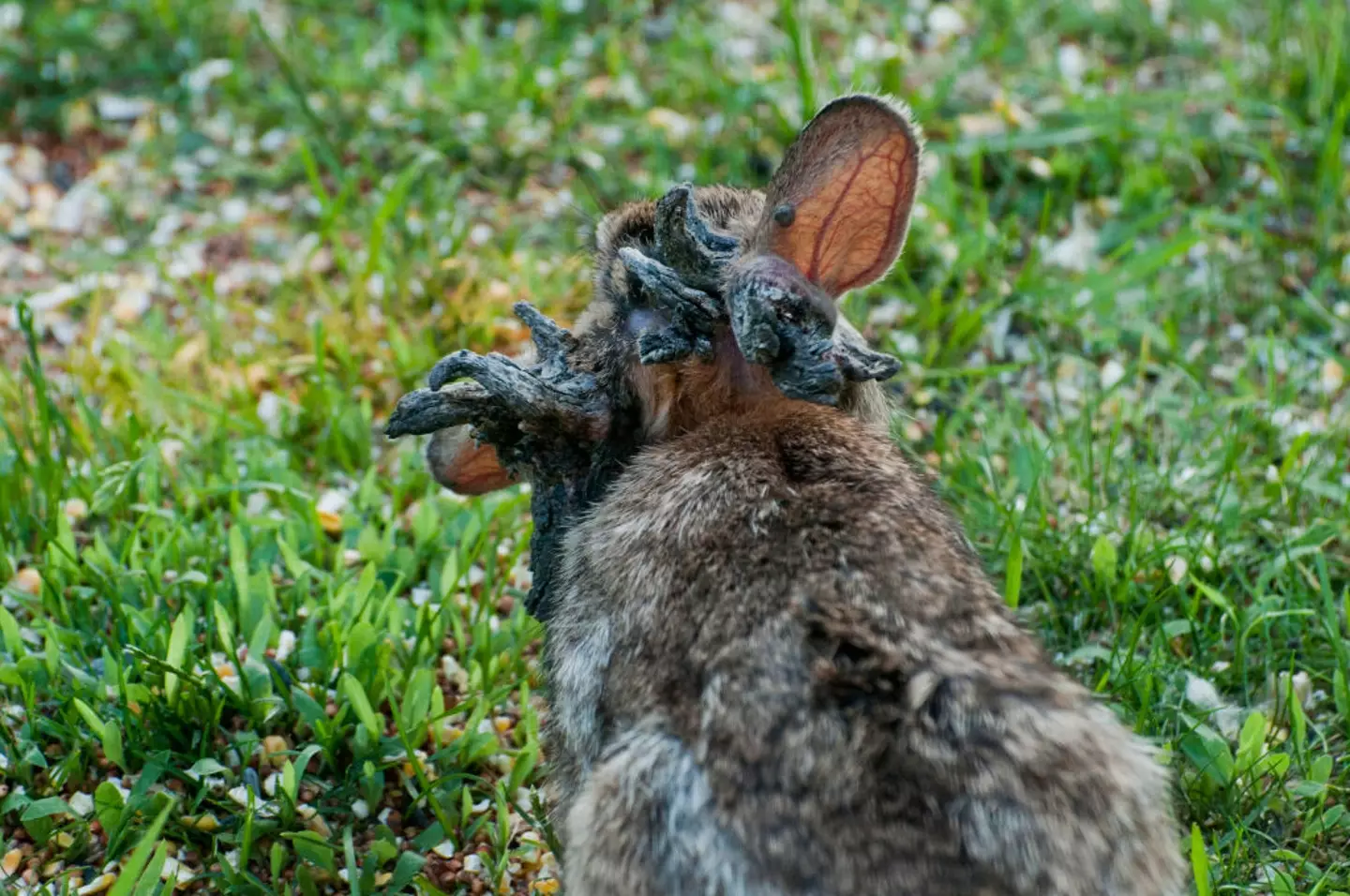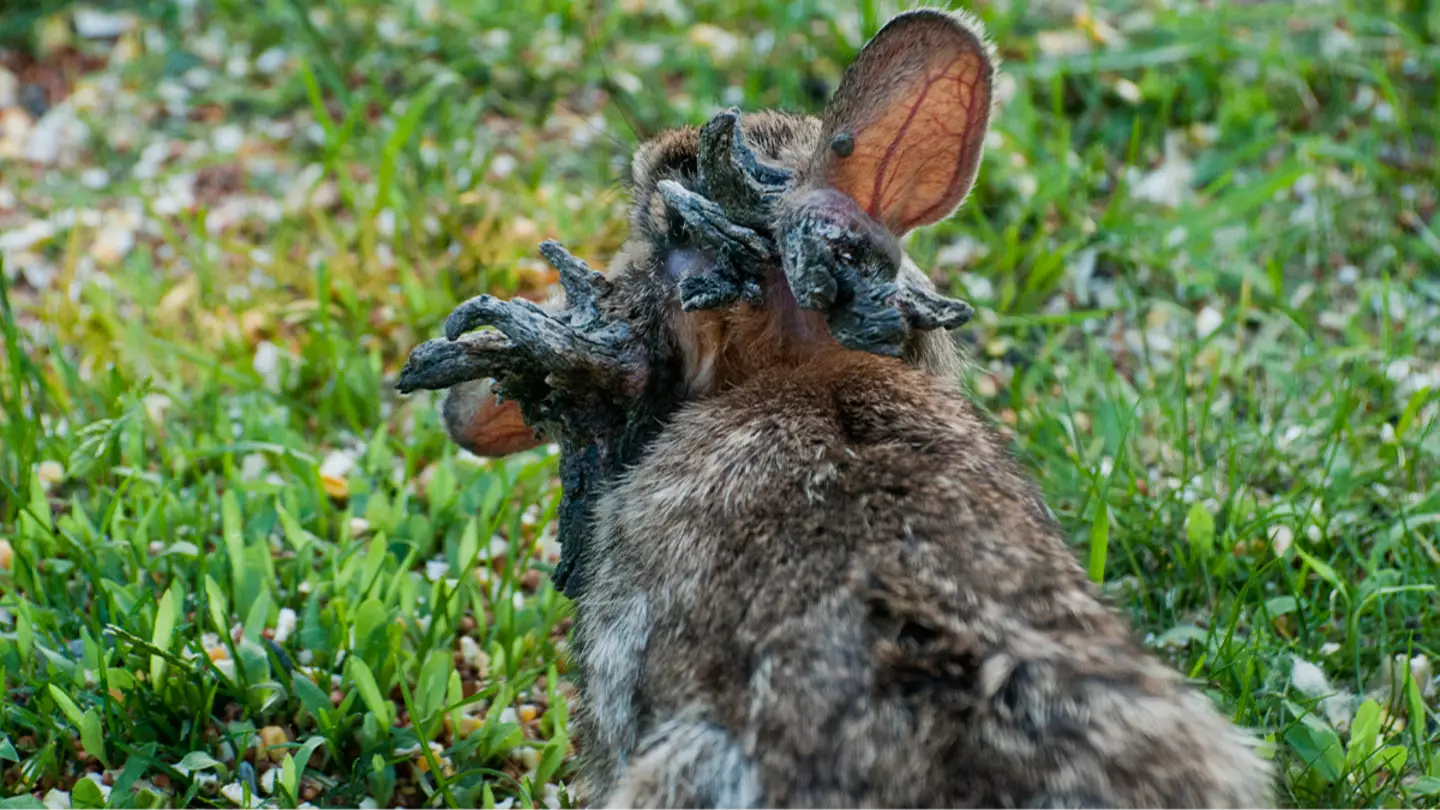A concerning virus is spreading among soft cuddly rabbits in the US, transforming them into alarming ‘Frankenstein’ bunnies with ‘tentacles’ emerging from their faces.
This scenario might sound like a plot from Wallace & Gromit, but these were-rabbits are indeed real. They have been seen around Fort Collins in Colorado, a location approximately an hour’s drive north of Denver.
While the term ‘lurking’ may make them sound more frightening than they are, these rabbits are simply unfortunate creatures infected with a virus that can be deadly. As the growths enlarge, the animals may ultimately be unable to see or eat, leading to starvation.
This description is the worst-case scenario, but in some cottontail rabbits, the disease resolves after a year.
“It looked like black quills or black toothpicks sticking out all around its mouth,” explained Susan Mansfield, a resident of Fort Collins, in an interview with WLBT.
“I thought he’d die off during the winter, but he didn’t. He came back a second year – and it grew.”
This condition is known as cottontail rabbit papilloma virus (CRPV), first identified in cottontail rabbits in the Midwest of America in 1933 by Richard E. Shope.
Also referred to as Shope papilloma virus, honoring its discoverer, it’s an oncogenic DNA virus, which means it causes tumors.
These tumors appear on the rabbits’ skin, and papillomaviruses can also lead to squamous cell carcinomas, a type of cancer.

Researchers have found that the virus is initially transmitted through diseases carried by mosquitoes and ticks, among other biting insects, but it can also be spread directly from one rabbit to another.
Direct contact between infected rabbits, especially through skin lesions, can facilitate the virus’s spread.
Additionally, the virus can be transmitted via bedding, food, and water bowls. Some studies also suggest that papillomaviruses can be spread through blood transfusions, although this is more theoretical, considering the logistics with rabbits.
In an imaginary scenario, you might envision Bugs Bunny setting up an IV pole for Yosemite Sam!

Fortunately, CRPV is a non-zoonotic disease, meaning it cannot be transmitted between animals and humans. However, caution should still be exercised.
Non-zoonotic diseases have the potential to mutate, which we’ve witnessed with SARS-CoV-2, the virus responsible for Covid-19.
Colorado Parks and Wildlife (CPW) has offered its expert advice.
According to Eyewitness News 3, individuals who encounter infected rabbits should avoid contact and keep their distance.
Medical experts advise rabbit owners to protect their pets from pests. If the rabbits are bitten by mosquitoes, veterinarians can remove tumors surgically before they become malignant.

